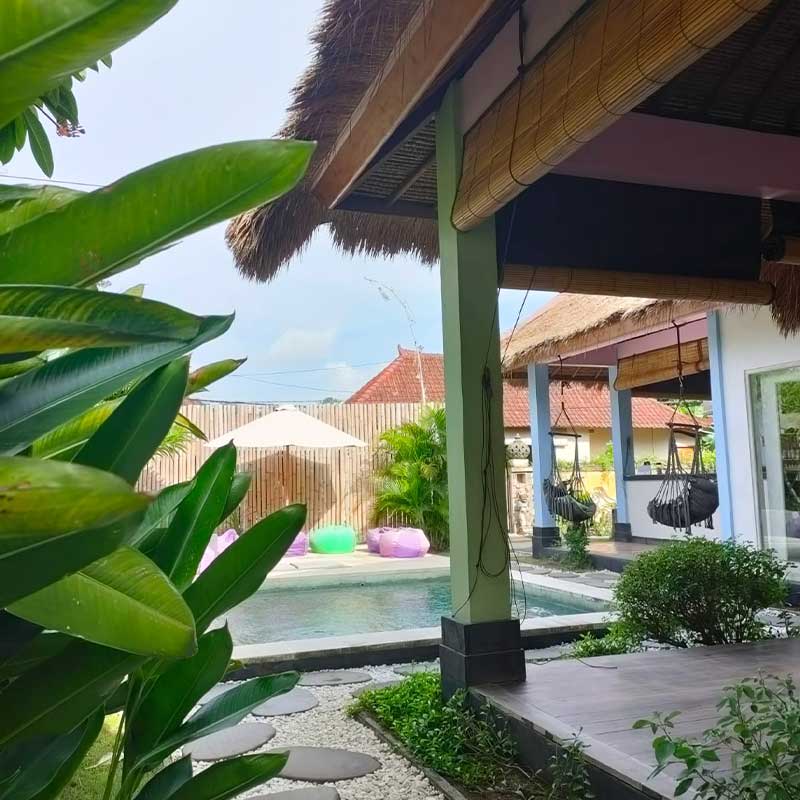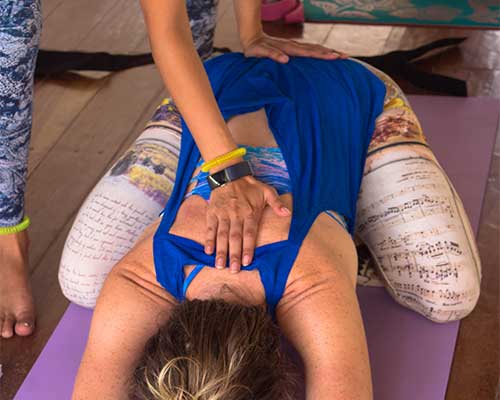

What is Yin Yoga
Introduction to Yin Yoga: Benefits and Practice
1. What is Yin Yoga:
Origins and History: Yin Yoga originated with Paulie Zink, who studied under Kung-fu master Cho Chat Ling. Over seven years of intense training, Paulie developed Yin Yoga, combining Taoist philosophy, flexibility training, and spiritual practice. Despite his success in martial arts, Paulie remained humble, crediting his master’s teachings.
Paul Grilley, inspired by Paulie Zink and Taoist yoga, further developed Yin Yoga by emphasizing long-held poses and mindfulness, helping to popularize it in the West. Sarah Powers added insights from Buddhist meditation, integrating mindfulness, breath awareness, and meditation into Yin Yoga. Together, they have shaped Yin Yoga into a practice that balances physical, mental, and spiritual well-being.
Philosophy and Principles: It is grounded in the philosophy of slowing down and embracing stillness. The practice involves holding postures for extended periods, typically between three to five minutes or longer. This extended duration targets the deep connective tissues, such as ligaments, tendons, and fascia, allowing for greater flexibility and joint mobility. Additionally, Yin Yoga incorporates meditative techniques, encouraging practitioners to cultivate mindfulness and inner peace. This combination of physical and mental focus makes it a deeply transformative practice.

2. The Benefits
Physical Benefits:
- Improvement of Flexibility: this practice stretches and targets the deep connective tissues, significantly enhancing flexibility over time.
- Joint Mobilization: By holding poses for extended periods, it helps to mobilize and lubricate the joints, promoting better joint health.
- Strengthening of Connective Tissues: The practice strengthens ligaments, tendons, and fascia, contributing to overall structural stability and resilience.
Mental Benefits:
- Stress Reduction: The meditative aspect of Yin Yoga promotes a state of calm and relaxation, effectively reducing stress levels.
- Improved Concentration: The focus required to hold poses and breathe deeply enhances mental clarity and concentration.
- Promotes Deep Relaxation and Letting Go: Yin Yoga encourages a mindful approach to relaxation, helping practitioners to release physical and mental tension.
Emotional Benefits:
- Release of Stored Emotions: Holding poses for longer periods can bring up and release stored emotions, providing emotional relief and balance.
- Development of Patience and Resilience: The stillness and extended holds in this yoga style cultivate patience and resilience, both on and off the mat.

3. How to practice
Necessary Equipment:
- Yoga Mat: A comfortable and supportive surface for your practice.
- Accessories: Cushions, blocks, and blankets to provide additional support and comfort during poses.
Basic Poses:
- Butterfly Pose:
- How to Perform: Sit with your feet together and knees apart. Allow your knees to drop towards the ground and lean forward, letting your spine round naturally. Rest your head on a cushion or block if needed.
- Duration: Hold for 3 to 5 minutes or more.
- Sphinx Pose:
- How to Perform: Lie on your stomach and prop yourself up on your forearms, with elbows directly under your shoulders. Keep your legs relaxed and let your lower back arch gently.
- Duration: Hold for 3 to 5 minutes or more.
- Dragonfly Pose:
- How to Perform: Sit with your legs extended wide apart. Lean forward from your hips, keeping your spine long. Use cushions or blocks under your chest or forehead for support.
- Duration: Hold for 3 to 5 minutes or more.
- Caterpillar Pose:
- How to Perform: Sit with your legs straight out in front of you. Fold forward from the hips, allowing your back to round and your head to rest on a cushion or block.
- Duration: Hold for 3 to 5 minutes or more.
- Reclining Twist:
- How to Perform: Lie on your back and bring your knees into your chest. Drop your knees to one side, keeping your shoulders grounded. Use a blanket or cushion under your knees for support.
- Duration: Hold for 3 to 5 minutes on each side.
Tips for Beginners:
- Listen to Your Body: Pay attention to your body’s signals and avoid pushing beyond your limits.
- Use Props for Support: Utilize cushions, blocks, and blankets to make poses more comfortable and accessible.
- Breathe Deeply and Regularly: Focus on deep, steady breathing to enhance relaxation and support your practice.

4. Yin Yoga vs Other Yoga Styles
Comparison with Hatha, Vinyasa, and Ashtanga:
-
Pace:
- Yin Yoga: Slow and deliberate, with poses held for several minutes to target deep connective tissues.
- Hatha Yoga: Moderate pace, focusing on static poses with an emphasis on alignment and breath.
- Vinyasa Yoga: Faster pace, with a flow of postures linked by breath, creating a dynamic and continuous sequence.
- Ashtanga Yoga: Very structured and dynamic, with a specific sequence of poses practiced at a vigorous pace.
-
Intensity:
- Yin Yoga: Low physical intensity but high in mental and emotional engagement. The long holds can be challenging in terms of patience and mindfulness.
- Hatha Yoga: Moderate physical intensity, suitable for beginners and those seeking a balanced practice.
- Vinyasa Yoga: High physical intensity due to the continuous movement and transitions between poses.
- Ashtanga Yoga: Very high physical intensity, requiring strength, flexibility, and endurance.
-
Focus:
- Yin Yoga: Focuses on stretching and rehabilitating the connective tissues, promoting joint health, and enhancing flexibility. Emphasizes mindfulness and meditative practices.
- Hatha Yoga: Focuses on balancing body and mind through static postures, breath control, and meditation.
- Vinyasa Yoga: Focuses on fluidity and synchronizing movement with breath, building strength, and cardiovascular fitness.
- Ashtanga Yoga: Focuses on a rigorous and disciplined approach to practice, building strength, flexibility, and stamina through a set sequence of poses.
Why Choose Yin Yoga as a Complement or Main Practice:
- Complementary Benefits: Yin Yoga is an excellent complement to more dynamic styles like Vinyasa and Ashtanga, as it targets areas that are often neglected in faster-paced practices. It enhances flexibility, joint health, and mental calm, balancing the yang energy of more active practices.
- Increased Mindfulness: Yin Yoga encourages a meditative approach, helping to cultivate mindfulness, patience, and inner peace. It’s particularly beneficial for reducing stress and promoting mental clarity.
- Recovery and Healing: The gentle nature of Yin Yoga makes it ideal for recovery and healing, whether from intense physical activity or the stresses of daily life. It aids in the release of deeply held tensions and emotions, fostering overall well-being.
- Accessibility: Yin Yoga is accessible to practitioners of all levels, including beginners. Its slow pace and the use of props make it adaptable to individual needs and limitations.
- Holistic Approach: Yin Yoga’s emphasis on the body’s connective tissues, combined with its meditative aspect, offers a holistic approach to yoga that nurtures both the physical and emotional self. This makes it a valuable practice for anyone seeking a balanced and integrative yoga experience.

Key points & Conclusion
Yin Yoga is a gentle yet transformative practice that focuses on deep connective tissues, promoting flexibility, joint health, and mental clarity. Originating from the teachings of Paul Grilley and Sarah Powers, it combines Taoist philosophy with mindfulness and meditation. By holding poses for extended periods, practitioners experience profound physical, mental, and emotional benefits, including stress reduction, improved concentration, and emotional release.
If you’re seeking a way to balance your fast-paced life with deep relaxation and inner peace, Yin Yoga might be the perfect practice for you. It’s suitable for all levels and can complement more dynamic yoga styles, making it a versatile addition to your wellness routine.
Ready to experience the transformative power of Yin Yoga? Sign up for our comprehensive training program, or join us for a Yin Yoga class. Dive deeper into your practice and discover the profound benefits of Yin Yoga today!
Check out the information of our Yin Course in Bali: 100 Hour Yin Yoga & Chinese Medicine or 50 Hour Yin Yoga & Meridian
